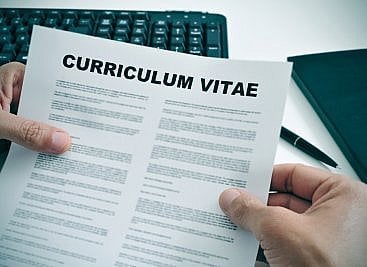One of the few upsides of the Coronavirus lockdowns was the revolution in interviewing. Video was once seen as at best a bit quirky and mostly a non-starter. For much of the pandemic it was the only way and is now the norm with perhaps a face to face at final stage or to “seal the deal”. Video interviews or meetings are more convenient and time effective for both sides.
Your key priority of course, if you’re considering a move, is to enhance your likelihood of being offered an interview for a consulting job. You can do this by producing a great CV and LinkedIn profile and an effective job search strategy.
Even in a more buoyant market where you might have interest from a number of employers the best jobs will always be highly competitive.
So if you have the offer of an interview you will always want to maximise your chances of getting to the next stage.
The importance of communication in video interviews
For both the hiring firm and the candidate, making a good impression at this stage is crucial and may be your only opportunity to do so. Video interviews are every bit as important as face-to-face. While you may be very confident of your abilities in the more traditional meeting format some measures are needed to ensure a two-way video call is a success. An excellent tip is to approach it in the same way as a “traditional” interview including ample preparation.
A further consideration is that much client interaction is now conducted via video so a consultancy employer will also have this in mind when evaluating a candidate i.e. assessing their credibility and impact over this virtual medium.
You may need to somehow do more to make a memorable (and favourable!) impression. Video can miss physical clues and endless Zoom/Teams calls can become a blur for interviewers.
Preparation for the interview is key
A Glassdoor survey revealed that 88% of hiring decision-makers believe “an informed candidate is a quality candidate.” Ensure you have done your homework as you would for a face to face interview .
First impressions count
A cliché but true: 33% of interviewers claimed to know whether they were going to hire someone in the first 90 seconds. This may not seem fair but is as true of video interviews (e.g. Zoom, Microsoft Teams etc.) as face-to-face.
There is much advice and guidance available on this topic but the key points to consider are around your initial presentation and impact.
Technical preparation for your video interview
1. Test run your equipment
Ensure your device is plugged in or fully charged: video calls are much more draining than many other uses. Also consider a quality headset: the audio is often much better.
Some video software works best on Chrome and not all works well on Safari (Apple). With some you can inadvertently have the link open more than once and it may cause echo: close all other links and browsers!
Use a steady camera, ideally the one built into your laptop. If you have to use mobiles then rest smartphones or tablets on a flat surface or, ideally, in a holder. No employer is impressed by you holding a device in your hand and it looking like a recording of the ‘Blair Witch Project’.
Make sure audio and video is switched on and that you have “allowed” these in your browser, if asked. Test your audio and camera including reviewing position and background (see below). Sometimes the link’s default is video OFF. Ensure the video is on when you connect even if the interviewer’s isn’t. NB occasionally interviewers leave the video off but don’t let that unnerve you and always remember they can still see you!
2. Check your connection
Make sure to test your connection (WiFi or ideally cable) beforehand. If at home or you have low bandwidth, ensure you have exclusive use of the connection and that others aren’t attempting to stream or download. Keep in mind that a borrowed interview room in the depths of your office won’t have a good mobile signal if you’re planning to use that. Also avoid using your phone as a WiFi hotspot for your laptop unless you are very confident of the signal.
Check that both sides know account and connection details. Skype can be especially problematic in this regard. If using WhatsApp or Skype (rare but still used!) decide who is calling who if necessary. Agree a backup plan e.g. a mobile number, but don’t be tempted to give up on the video option. Telephone calls are not a substitute for a thorough virtual interview. There is no excuse for claiming to not be au fait with video technology as it has become part of normal life. Furthermore, if you can’t get it right during an interview, then the interviewer may wonder if you can handle video communications during the role if they were to hire you.
3. Close all apps
Close other programmes that may cause interruptions or distracting notifications such as Outlook, Facebook and Twitter. Not only can it throw you off, and use bandwidth, it can also appear unprofessional as it could be noticed by the interviewer that you’re constantly glancing away. Turn off any notifications to ensure nothing disturbs the interview.
4. Keep your account professional
With some video apps there may be account names or photos. The prospect of an interview with “kittenluvver123xxx” is hardly going to fill an employer with optimism. Perhaps stick to your name or initials to maintain professionalism. Also, ensure the account doesn’t reveal unhelpful personal information or unprofessional photographs. Family pictures are fine if the agreed format is clearly using a personal medium e.g WhatsApp but again caution is advised.
5. Do a trial run of the video interview
Practice in advance and perhaps a trial run with a friend. There are also great practice interview tools available on line and you can record and then review how you come across.
6. Rehearse screen sharing
Not everyone is familiar with this but it’s entirely possible you might wish to share documents or other information to go through. Ensure you know how to do so and, in particular, that the correct versions of the right documents (CV for example) are available and obvious when you click on “Share Screen”, rather than anything confidential or personal.
General preparation for your interview
7. Questions and answers
Consider your answers to likely interview questions and how to show your suitability for the management consultancy role. Also have a few questions of your own, although nothing which could indicate a lack of preparation! Clear interest and enthusiasm is very important and are demonstrated by prep and great questions.
8. Background and lighting
Remember the other person will see everything around you, so keep distractions and clutter to a minimum and keep it professional. A plain background is best. Make sure there are no filters in place. We’ve all seen the articles showing Zoom fails where backgrounds or filters cause mayhem.
Where possible use the preview screen option to check what the scene looks like. Don’t look down into the camera: it’s a very unflattering angle and for the other person peering up your nostrils and past your head to the ceiling or light fixture isn’t great. They will be unimpressed by a cameo appearance by the dog (or anyone else for that matter) or a pile of dirty laundry in the background. A glass of water in front of you might be wise, but a chipped Superman mug less so. Ensure you are in a quiet place where you won’t be disturbed.
Be very careful with lighting: don’t sit with your back to a window. Good lighting is very important: you need to be seen (literally “in a good light”!) and you need to look good.
9. Double-check arrangements
Video is especially useful for long-distance and cross-border interviewing check time zones. People often state “GMT” when they actually mean British Summer Time (BST) so best to check. Also, don’t be late! Best to arrive one or two minutes early, not least to allow time for sorting out last-minute technology glitches, but probably not 5-10 minutes early. Ensure you have allocated enough time. While video interviews are often shorter and you might have in mind a quick chat you could find it taking a lot longer so if in doubt agree the time window clearly beforehand.
During the interview
10. Dress to impress – this is crucial even over video
Although you may be at home, it’s not an excuse to remain in your pyjamas. Dress as you would in a face-to-face interview unless agreed otherwise. Including your bottom half…. Check it works on screen as some colours and patterns render badly and can be distracting.
While a jacket and tie is no longer required we would firmly advise against being too casual. For example, don’t wear a T shirt or fleece.
11. Be conscious of body language
Take care with posture and body language (e.g. avoid arms folded across chest). This is easy to get wrong on video calls. Remember to act exactly as you would if you were sitting in the same room as the interviewer or candidate.
Also don’t rock in your seat or lean forwards when you speak. It is easily done but not a good look with a wide-angle lens.
12. Know where to look
Maintaining eye-contact is more difficult over video but look into the camera, not just at the screen. It is one of the key adjustments that are required for this medium and makes a huge difference to engagement. There is a particular problem with some Apple kit, which has the camera on the side rather than above the screen. This makes it look as if you’re very distracted by something off to one side!
13. Be concise
Avoid lengthy answers, as it can be more difficult in a video interview for the interviewer to politely interject if you’re drifting off the question. Keep to the point. Similarly, beware of over-explaining why you left your last job or want to move. Keep it brief unless the interviewer wants a deep dive.
14. Consider a cheat sheet
Unlike a face-to-face interview, a video interview offers more opportunity to use notes, your CV, the job spec or other prompts if you feel they are helpful. These could be printed off, or on screen. Make sure however not to give the impression of reading from a script. Reading from a CV is a bad idea in all interview formats and is more obvious than you think in video interview. Take care if typing : you might think it is sensible to take notes, but the other person might think you are replying to emails so best to ask/check.
Etiquette after the video interview
A video meeting invitation may include the interviewer’s email address. While not essential, it is generally considered a good idea to thank them for their time and make clear your continued interest, in a warm message. Proper grammar, no typos! This applies whether the meeting was a result of direct contact or via an agency. Don’t expect a reply and don’t be concerned by a lack of response.
By following these handy tips, you can ensure you are well-prepared for your video interview. It will help to settling those nerves, and increase your chances of finding the perfect candidate or being offered the management consultancy job of your dreams!
For more information on how Prism Executive Recruitment could help you with your candidate hunt or job search, visit our Guides. You can contact Chris Sale (Managing Director) via Contact Us. on 01344 636426 or [email protected]
Elsewhere on our website you will find more advice and resources to help with your career planning, job search and interview preparation.



